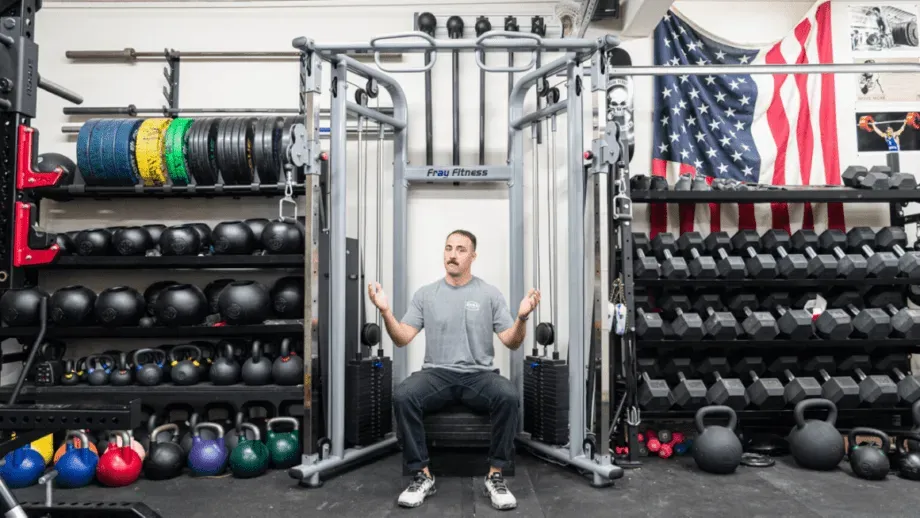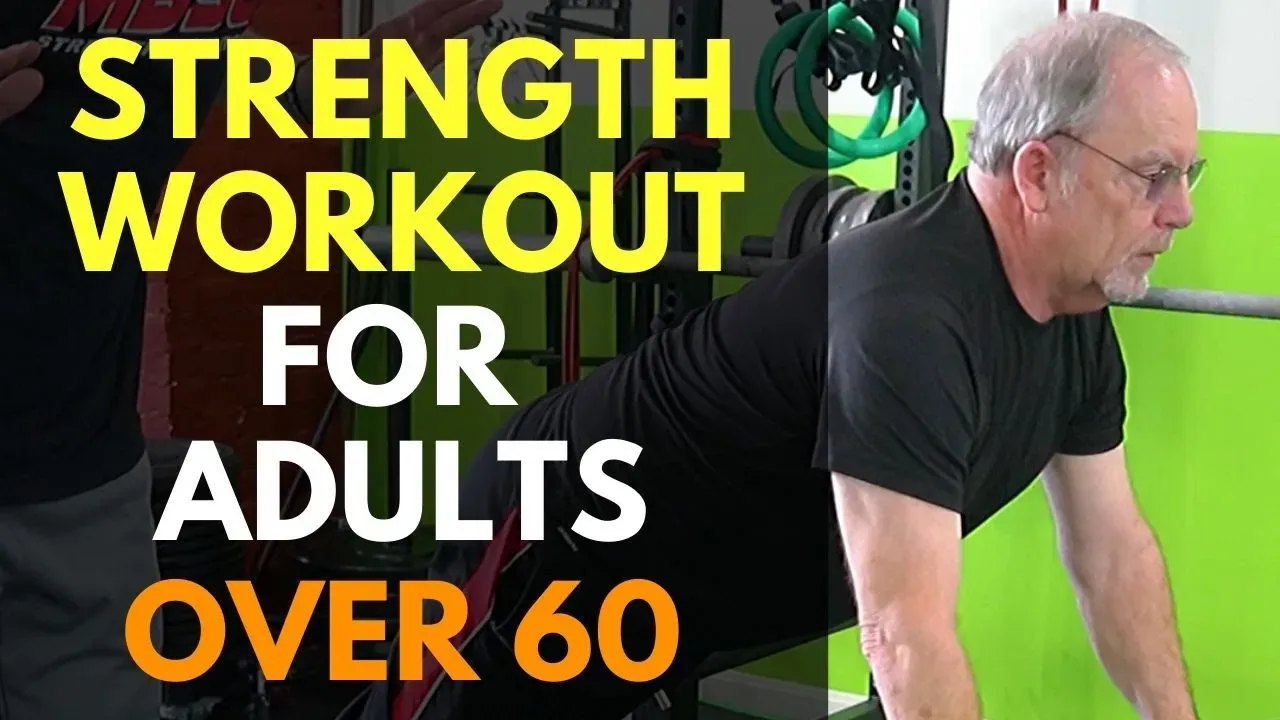Table of Contents
Hitting your 60s often brings new considerations about staying active and independent. Maybe you’ve noticed simple tasks feeling a bit tougher, or perhaps you’re just thinking ahead about maintaining strength and mobility. The good news? You absolutely can keep building or maintaining muscle and bone density, crucial for everything from carrying groceries to keeping your balance. Gyms can feel intimidating or inconvenient, which is why many people turn to creating a fitness space right at home.
Why Strength Training is NonNegotiable After 60
Why Strength Training is NonNegotiable After 60
Look, nobody gets out of aging without some wear and tear. After 60, your body starts shedding muscle mass faster than a snake sheds its skin, and your bones? They're thinking about retirement too, losing density. This isn't just about looking good; it’s about keeping your independence. That wobbly feeling climbing stairs, the struggle to open a jar, the fear of a fall – a lot of that boils down to losing strength you didn't even realize you were using daily. This is precisely **Why Strength Training is NonNegotiable After 60**. It’s not just exercise; it's an investment in your ability to keep doing the things you want to do, whether that's playing with grandkids, gardening, or simply getting off the sofa without groaning like a rusty gate.
What Makes the Best Home Gym for 60 Year Olds Different?
What Makes the Best Home Gym for 60 Year Olds Different?
So, you're not just looking for any old weight rack or resistance band setup. Finding the **best home gym for 60 year old** isn't about buying the flashiest machine with a million buttons. It's about functionality and, frankly, not ending up in a heap on the floor. Equipment needs to be stable – no wobbling contraptions that feel like they might tip over if you look at them funny. Access matters; you shouldn't need to be a contortionist to get on or off. Smooth, controlled resistance is key to protect those joints that have seen a few decades of action. We're talking less jarring free weights (unless you're experienced and careful) and more resistance systems like cables, bands, or bodyweight setups that provide consistent tension without sudden drops or impacts. Adjustments should be simple, not requiring a degree in mechanical engineering or tiny screws you can't grip.
Types of Equipment: Finding Your Best Home Gym for 60 Year Old
Types of Equipment: Finding Your Best Home Gym for 60 Year Old
Resistance Bands and Bodyweight Systems
When you start looking for the **best home gym for 60 year old**, often the simplest things are the most effective and safest. Think resistance bands. These aren't your kid's flimsy rubber bands; they come in varying strengths and offer smooth, controlled resistance through the entire range of motion. They're incredibly versatile, portable, and easy on the joints. You can use them for everything from shoulder presses to leg extensions. Bodyweight exercises – squats, lunges holding onto a chair, push-ups against a wall – are also fantastic. They build functional strength, using your own mass as resistance. Combining bands and bodyweight exercises gives you a full-body workout without needing much space or complex machinery. It's a smart starting point.
Cable Machines and Total Body Systems
Moving up a notch, we look at cable machines or total body systems. These are often featured when discussing the **best home gym for 60 year old** because they offer guided movements and consistent tension. Machines like a multi-gym with selectorized weight stacks mean you don't mess with loading plates, reducing pinch hazards. Cable systems allow for a huge variety of exercises from different angles, mimicking real-life movements. Some popular systems use bodyweight resistance on a glideboard, which adjusts the intensity by changing the incline. These tend to be low-impact and provide excellent joint support. While they take up more space and cost more than bands, they offer a comprehensive, safe, and often comfortable workout experience.
- Resistance Bands: Low cost, portable, versatile, joint-friendly.
- Bodyweight: Free, builds functional strength, no equipment needed initially.
- Cable Machines: Guided movement, consistent tension, versatile exercises, safer weight adjustment.
- Total Body Systems (like glideboard types): Low-impact, joint support, full-body workouts.
- Free Weights (Dumbbells/Kettlebells): Effective but require more control and balance, higher injury risk if form is poor.
Beyond the Machine: Creating Your Ideal Home Fitness Space
Beyond the Machine: Creating Your Ideal Home Fitness Space
Picking Your Spot and Making it Safe
Alright, so you've got an idea of the kind of equipment that might fit your needs for the **best home gym for 60 year old**. But the machine itself is only part of the equation. Where are you putting this thing? Clutter is the enemy of a safe workout space, especially when balance might be a concern. You need enough room not just for the equipment, but space around it to move freely without tripping over stray shoes or furniture corners. Think about the floor – is it stable? Carpet can be okay, but hard floors might need a mat for grip and joint cushioning. Make sure it's well-lit. Tripping hazards disappear when you can actually see them. Consider proximity to a wall or sturdy piece of furniture you could grab if you feel unsteady during a balance exercise. Seriously, falling is a major concern, so anything you can do to mitigate that risk is gold.
Setting the Scene for Success and Safety
Beyond just the physical layout, the environment matters. Good airflow is crucial; you don't want to feel stuffy while you're exercising. Maybe open a window or use a fan. Have water readily available – staying hydrated is non-negotiable. Music can be a great motivator, but keep the volume reasonable so you can still hear if something shifts or if someone calls out. A mirror isn't just for checking your form (though that's important); it also adds to the feeling of a dedicated workout zone. And let's talk safety items. Having a phone nearby is smart. Knowing basic first aid, or at least having supplies handy, isn't a bad idea either. For some, having a medical alert device might offer peace of mind. Think about what would make you feel most secure exercising alone.
- Clear the area: Remove tripping hazards like rugs, cords, or clutter.
- Stable flooring: Use mats on hard surfaces for cushioning and grip.
- Good lighting: Ensure the space is bright to see clearly.
- Easy access to hydration: Keep a water bottle within reach.
- Ventilation: Ensure good airflow.
- Safety contact: Keep a phone nearby or consider a medical alert device.
Your Home Gym: More Than Just Equipment
Picking the best home gym for 60 year old isn't just about buying a machine; it's an investment in maintaining your autonomy and quality of life. We've walked through why keeping your muscles and bones happy is non-negotiable at this stage, looked at what features make equipment genuinely suitable, and explored various setups. While no single piece of gear is a magic bullet, finding the right fit for your space, budget, and physical needs provides a consistent, convenient path to staying strong. Consistency beats intensity every time, and having a solid setup at home removes many common excuses. So, choose wisely, maybe get a little professional guidance to start, and put in the work. Your future self navigating stairs or lifting grandkids will thank you.